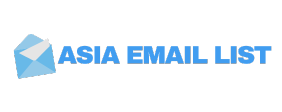Mastering the Sales Funnel How B2B Email Lists Drive Conversions
Mastering the sales funnel is crucial for any business, and B2B email lists can be powerful tools in driving conversions. The sales funnel is a visual representation of the customer journey, from initial awareness to making a purchase. It typically consists of four stages: Awareness, Interest, Decision, and Action (AIDA). Let’s explore how B2B email lists can help at each stage of the sales funnel: Awareness: At this stage, potential customers become aware of your brand, products, or services. B2B email lists can help you reach a broader audience by sending out targeted email campaigns to businesses within your target market. By providing valuable content, such as industry insights, informative blog posts, or whitepapers, you can establish your authority and credibility.
Once prospects are aware of your brand
The goal is to generate interest in what you offer. B2B email lists can be utilized to send out more focused content, such as case studies, product demos, or webinars. These emails can highlight how your products or services can Dominica B2B List address specific pain points and provide solutions to the challenges your potential customers are facing. Decision: At this stage, prospects are evaluating their options and deciding which solution best fits their needs. B2B email lists can be used to send personalized emails, offering free trials, product comparisons, or exclusive discounts to push them towards making a decision in your favor. Action (Conversion): The action stage is when the prospect becomes a customer by making a purchase or signing up for a service.
B2B email lists can play a crucial role in
Converting leads into customers by sending out compelling calls-to-action (CTAs) and time-limited offers. This can create a sense Asia Email List of urgency and drive prospects to take the final step. Tips for using B2B email lists effectively: Segmentation: Segment your B2B email list based on factors such as industry, company size, or previous interactions with your brand. This allows you to send highly relevant content to different groups, increasing the chances of conversion. Personalization: Use personalized email content addressing recipients by name and tailoring the message based on their specific needs. Personalization makes the emails more engaging and helps build stronger connections with potential customers.
Automation: Utilize email automation tools to send timely and relevant emails based on user actions or triggers. This can save time and ensure that prospects receive the right information at the right stage of the sales funnel. Monitor and Analyze: Keep track of email campaign performance and analyze the data to understand what works best. Metrics like open rates, click-through rates, and conversion rates will provide valuable insights into your email marketing effectiveness. Compliance: Ensure that you comply with relevant email marketing laws and regulations, such as the General Data Protection Regulation (GDPR) if applicable to your target audience.

